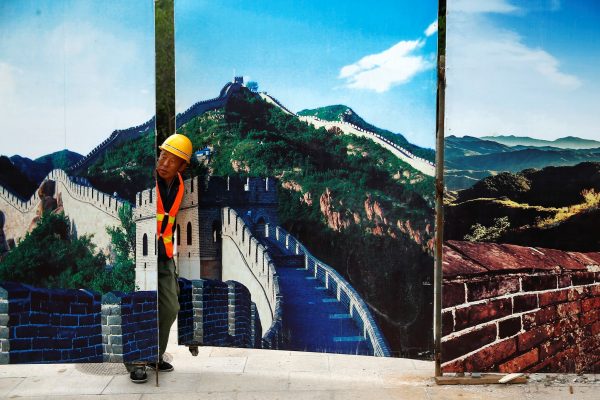‘Dual circulation’ was proposed as one of the key elements of China’s new development framework. Over the past 30 years China has embraced the global economy and international circulation — international trade, investment and human exchanges — has played a central role in China’s remarkable growth. Yet domestic circulation — focussing on building domestic markets — is now being emphasised as a response to the changing international environment.
Based on national security concerns, the United States has geared up its efforts to decouple from China on the technological front. The true intention, as it is widely understood in China, is to slow down or even halt China’s technological advancement. The entity list designated by the US Department of Commerce bans US export of high-tech components, including high-precision chips, to more than 200 Chinese companies and universities. Huawei has already lost all its supply sources of high-precision chips, and if the ban continues into 2021, Huawei will have to stop its production of high-end smartphones.
Against this background, building autonomous technologies in key areas, including the chips industry, has become the top priority of China’s domestic circulation. China will incur higher costs in producing domestically, but US chip companies will also lose a large market and their innovation capacity will be seriously hampered. The election of Joe Biden as the next US president raises hopes that the US government will change its technology policy towards China. While technological competition between the two countries will not disappear, the Biden administration will likely focus more on raising the United States up rather than holding China back.
China’s urbanisation has lagged behind its pace of economic development. Presently, 60 per cent of residents live in cities. The government plans to increase China’s urbanisation rate to 75–80 per cent over the next 15 years.
Most of the new urban dwellers will be concentrated in a few urbanised regions, including the Pearl River Delta and Yangtze River Delta regions, and in Beijing, Tianjin and surrounding regions. The new strategy will greatly change the geographic distribution of China’s population and economic activities.
Accompanying the new urbanisation drive, China will have to reform its household registration or hukou regulations. Among the 60 per cent of people living in cities, one-quarter do not have urban hukou. Hukou carries a range of welfare entitlements, ranging from entitlement to buy a car to children’s eligibility to college admission.
Removing it implies drastic redistribution of welfare and entitlements, and the recipient cities would surely shoulder most of the costs. This is why they have strongly opposed hukou reform plans so far. A more realistic approach is to replace the hukou with a residency card that gradually accumulates welfare privileges. To finally remove the obtrusive effects of hukou requires that the provision of welfare be equalised across cities.
This is related to the third area of new development introduced by the 14th Five Year Plan.
Despite China’s centralised political system, it has the most decentralised fiscal system in the world. Local government spending accounts for 85 per cent of total government spending. Accordingly, China’s social security and other welfare programs are fragmented, often operating at the county level. This fragmented system greatly hampers the sustainability of China’s social security system and impedes free mobility of labour across regional borders.
To make China’s pension system sustainable, the country needs to raise the retirement age, particularly for women. The current retirement ages are 50 and 55 years, respectively, for female and male blue-collar workers, and 55 and 60 years, respectively, for female and male white-collar workers. These were set in the 1950s when China’s life expectancy was barely above 60. Now China’s life expectancy is 77 and is increasing at a pace of about one year every 3–4 years.
Another task of equalisation is to increase the provision of public goods in the countryside. China aims to become a fully modernised country by 2035. Universal coverage of social security is a key feature of modernised countries, but with a deep urban–rural divide, universal coverage based on a single scheme will be a remote target for China even by 2035. More realistically, China should develop a ‘unified but multilayer’ system that offers a menu of schemes that vary by premiums and corresponding benefits.
The last area of new development is greener production. International and domestic pressures are increasing for China to shift toward a greener economy. Since China joined the World Trade Organization in 2001, it has contributed 80 per cent of the world’s growth in carbon emissions.
Accelerated urbanisation means that China’s energy consumption will greatly increase over the next 15 years. Fossil fuels, mostly coal, still account for 80 per cent of China’s energy mix. China must drastically increase energy efficiency. Government agencies have already taken action, with plans for carbon trading and green finance being rolled out.
Combatting climate change will allow China and the United States to find common ground for cooperation.
China’s 14th Five Year Plan makes technological autonomy as one of the country’s top priorities. It also signals a shift from pure economic growth to social and climate-friendly development. The new urbanisation strategy, more equal distribution of public goods and increased investment in environmental technologies will provide new sources for sustainable growth, either by increasing domestic demand or by improving China’s economic efficiency.
Yao Yang is Cheung Kong Scholar and Liberal Arts Chair Professor, Dean of the National School of Development and Director of the China Centre for Economic Research at Peking University.
A longer version of this article originally appears in the most recent edition of East Asia Forum Quarterly, ‘How China is changing’, Vol. 12 No. 4.

